New Zealand’s batty energy system
New Zealand is running dangerously low on electricity. During times of high demand, the only thing saving New Zealanders from power blackouts is electricity generated by burning imported coal at Genesis Energy’s Huntly Power Station. Between April and August 2025, Genesis will import about 800,000 tonnes of overseas-mined coal for burning at Huntly. Power prices are cripplingly high, with no respite in sight.
New Zealand’s power crisis is entirely predictable and self-inflicted. This piece identifies the main causes of Powertearoa’s Paucity.
The laws of resource mismanagement
The Resource Management Act 1991 practically halted construction of new electricity generation. The only significant new generation since 1991 has been wind turbines, which now produce about 6% of New Zealand’s electricity.
In tacit recognition of the devastating economic and social consequences of their autocratic response to the COVID virus, the Labour Government passed the COVID-19 Recovery (Fast-track Consenting) Act 2020. The legislation’s express purpose was to:
The laws of resource mismanagement
The Resource Management Act 1991 practically halted construction of new electricity generation. The only significant new generation since 1991 has been wind turbines, which now produce about 6% of New Zealand’s electricity.
In tacit recognition of the devastating economic and social consequences of their autocratic response to the COVID virus, the Labour Government passed the COVID-19 Recovery (Fast-track Consenting) Act 2020. The legislation’s express purpose was to:
“urgently promote employment to support New Zealand’s recovery from the economic and social impacts of COVID-19 and to support the certainty of ongoing investment across New Zealand, while continuing to promote the sustainable management of natural and physical resources”.
Under that COVID Recovery Fast-track legislation, Contact Energy applied to build multiple electricity-generating wind turbines (a so-called “wind farm”) in Southland.
Those uninitiated in environmental zealotry would have been inclined to anticipate that Contact Energy’s application would waltz through the process; wind farms being carbon neutral and a light touch on landscape and life forms. Pertinently, the regulations permitting the Southland Wind Farm proposal to proceed under the COVID Recovery Fast-track legislation - the COVID-19 Recovery (Fast-track Consenting) Referred Projects (Waiuku and Southland Wind Farms) Amendment Order 2023 - record that:
“The Minister has accepted [the Southland Wind Farm] application for the following reasons… “it has the potential to generate…approximately 160 to 240 direct full-time equivalent jobs (FTE jobs) over a 2-year construction period…[and]…contribute to New Zealand’s efforts to mitigate climate change and transition more quickly to a low-emissions economy by generating renewable energy”.
Unfortunately, the enervating reality is that shiny new wind farms are far from fait accomplis in the Aotearoa incarnation of New Zealand, even under concessionary consent legislation.
On 18 March 2025, an “Expert Consenting Panel” decided to reject Contact Energy’s Southland Windfarm Application. The so-called experts, Clare Lenihan (Chair), Gina Solomon and Sharon McGarry, were, according to their decision, “not satisfied adverse effects on significant indigenous vegetation and…fauna…can be offset or compensated for…”.
The expert panel was especially agitated about imagined threats that wind turbines would pose to bats - but also lizards, and “invertebrates” (animals without spines)…plus plants.

Claire is an environmental lawyer.
Gina is a member of the National Heritage Fund Committee, which provides recommendations to the Minister of Conservation on what the National Heritage Fund should fund. The Department of Conversation’s website describes Gina as “of Ngāi Tahu, Kurahaupo, Ngati Koata, Te Atiawa and Ngati Toa descent and is Ngati Kuri tangata whenua in Kaikoura”, a person who “brings Te Tiriti o Waitangi and Tikanga Maori to these forums”.
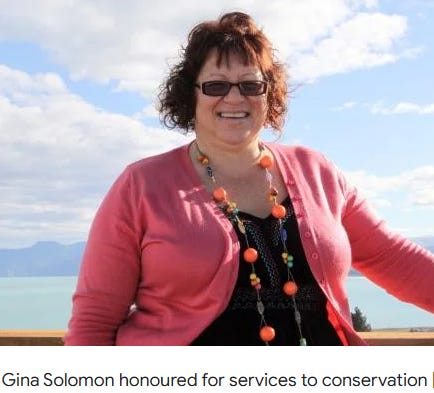
Sharon, with her degree in Zoology, is a full immersion resource management consent “Lifer”.
Highest prices for all!
Exorbitant New Zealand electricity prices result primarily from New Zealand’s extortionate wholesale electricity market.
In fair, efficient markets, prices result from voluntary deals struck between willing sellers and buyers, with each seller and buyer settling on their agreed price for whatever’s being traded. But New Zealand’s fishy electricity market is a different kettle of electrons.
Under NZ’s “locational marginal pricing” wholesale electricity market, each generator offers its electricity, in one of a continuous series of consecutive 30 minute trading-periods. Each generator’s offer specifies its bid price and quantity, as well as the location at which the generator will inject the offered electricity into the national grid.
Market participant buyers - mainly electricity retailers - nominate whatever quantity of electricity they wish to receive, in any given half hour. But they don’t get to specify the price at which they are willing to buy. Buyers must passively accept the “spot price” for the relevant half hour, which is where things get spotty. The spot price is fixed by the market operator (Transpower) tallying up the demand for electricity for the half hour and then working up the “stack” of generators’ offers of electricity – starting with the cheapest offer - until the demand is met.
And here’s the clincher, Dear Readers. The price all offering generators receive for their electricity offered in the relevant half hour is not (except for the most expensive electricity injected into the grid) the price at which they’ve offered their electricity. The across-the-board price received by all generators is the price of the most expensive electricity required to satisfy the demand. That most expensive price is typically set by the most expensive electricity production - typically coal fired.
Think of an apple market with the same core (pun) features as NZ’s wholesale electricity market. In each half hour slot, each apple vendor offers their fruit in a physical apple market, specifying how many apples they wish to sell, at what price. Then, instead of aspiring apple buyers being able to purchase the apples they covet, directly from their preferred apple trafficker at the trafficker’s offered price, each buyer must purchase at the highest price at which offered apples are purchased in the relevant half hour.
The marginal pricing wholesale electricity market disincentivizes construction of new, cheaper, generation, because cheaper generation has the potential to depress the market-price-setting marginal price.
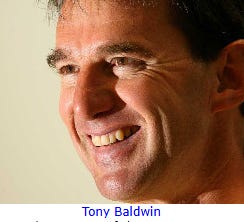
Who invented this mad market methodology? That was the “Wholesale Electricity Market Development Group”, back in 1994. The origin of this market deformity is lost back in the mists of time, but the deformity still stalks New Zealanders to this day. A guy named Tony Baldwin, who still circulates, appears to have led that Development Group.
Dissonant Generators
New Zealand band The Datsuns’ song Harmonic Generator opens with the lines:
I'm gonna push the button flick the switch today'Cause you got nothing I want, I got nothing to say
Which could be a chorus from the multitudes wanting to get off-grid and escape the predations of New Zealand’s electricity system.
Click to view
Harmonic Generator also contains the line, “Turning tricks baby, electric mistress”, and if you listen carefully lead singer “Dolf” de Borst is not singing “Harmonic Generator”. He’s singing “Whore Money Generator”, which aptly describes New Zealand’s electricity generators.
The four horsemen generating New Zealand’s electricity apocalypse are Meridian Energy, Genesis Energy, Mercury Energy and Contact Energy. Meridian, Genesis and Mercury are all 51% owned, and thereby controlled by, the New Zealand Government.
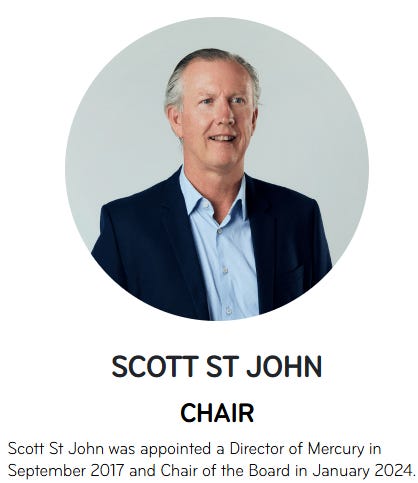

Contact is not Government owned/controlled, but is no angel. In December 2019, Contact (along with Meridian) spilled water from their dams that could’ve been used to generate electricity. Following complaints, the Electricity Authority investigated and its chief executive announced, “generators spilled water in preference to lowering their offer prices”. There was nevertheless no punishment.
In 2024, the aggregate sum of the dividends paid by Meridian, Genesis and Mercury to the New Zealand Government was about NZ$522 million i.e., over half a billion bucks. New Zealand’s electricity system is therefore a thin disguised mechanism by which the Government tithes its poor, hapless on-grid citizenry.
What are the odds of the chairs of Meridian, Genesis and Mercury advocating for changes to the system? These compliant turkeys won’t be voting for Christmas, or for anything that might ruffle their or anyone else’s feathers.
Gas!...what gas?
Natural gas meets over a fifth of New Zealand’s energy needs, by generating electricity or directly (gas hobs, etc.). It would be more, but on 12 April 2018 Prime Minister Jacinda Ardern announced a ban on new offshore oil and gas exploration, a ban crystalized by legislation in November 2018.
Jacinda’s out-of-the-blue ban dramatically undermined New Zealand’s energy security, massively increased imported coal-burning for electricity production (coal emits twice as much CO2 per unit of energy as natural gas), ballooned electricity and gas prices and left the Government itself struggling to secure gas for essential services like schools and hospitals.
What are our politicians doing about all this?
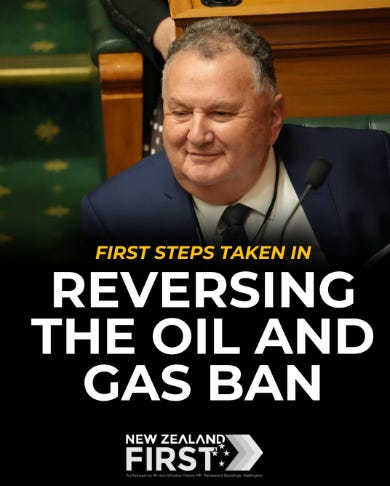
NZ First’s Shane Jones is alive to the dysfunctionality of New Zealand’s power system, arguing “The gentailers no longer operate in New Zealand in a way that enhances competitiveness... there are provisions under the existing electricity legislation that enables the Crown to use a code of conduct... to change their behaviour”, calling the Electricity Authority a “chocolate teapot” and mooting direct Government intervention in the electricity market. But Jones is only Associate Minister of Energy. What are the odds of the National Party’s Minister of Energy Simon Watts having a lightbulb moment and initiating positive reform?…nil.
ACT leader David Seymour, an economic purist, asserts that the electricity market, by generating debilitating electricity prices, is helpfully providing just the incentivizing price signals that New Zealanders need for new investment in more generation - analysis that ignores the stymying effects of sacrosanct bats.
The Greens advocate for absolute “decarbonization”. The Maori Party seeks “indigenous sovereignty” over electricity.
Why not follow the Fins and go nuclear?! Finland produces about 40% of its electricity from nuclear reactors, with a nice mix of hydro, wind and nuclear. Finland’s wholesale prices fell sharply after the commissioning of its Olkiluoto 3 nuclear reactor in 2023.
New Zealand is plagued by rent seekers, and we’re not talking landlords. We’re talking people who manipulate public policy and economic conditions to extort excess profits. New Zealand’s electricity generators are classic rent seekers.

New Zealand is blessed with a timeless lone-voice crusader against New Zealand’s electricity entropy, and oligopolistic rent seekers in general. He’s the redoubtable Geoff Bertram.
John McLean is a citizen typist and enthusiastic amateur who blogs at John's Substack where this article was sourced.


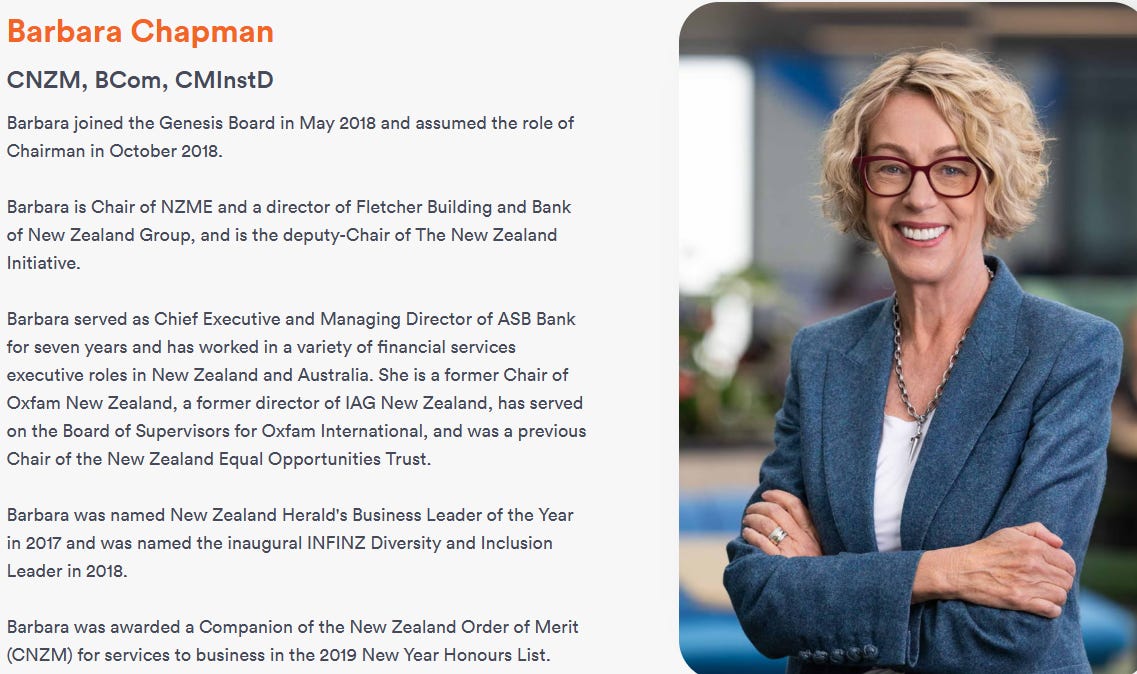
4 comments:
The windfarm argument requires a select committee approach where all parties strongest points can be analysed . The South Island has ample hydro for its use and replacing the cook strait electricity cable is now being discussed for the North Island.
The compelling questions start with why not Safe Nuclear power right beside Auckland ? Dont start the nuclear safety drama because nuclear power is all over the world in close proximity to towns and villages and NZ ers don"t demand non nuclear power on visits to the northern Hemisphere , particularly Europe .
It is nuts for wind farms built in Southland to send power through Transpower to Auckland with the cost of infrastructure and a new Cook strait cable to boot .
If the true cost of windfarms, the replacement cost of short lived windfarm infrastructure , the backup cost of unreliable wind and solar power by reliable power from coal , nuclear and hydro , the cost of Transpower infrastruture and the government subsidies for climate change etc were honestly ,YES Honestly debated the proposed windfarms would be canned for gas, clean coal and nuclear power production.
Plus we could use NZ coal and jobs, NOT importing coal from Indonesia and ACT could save the budget blowout again next year .
Thanks John for the insight - most of us had no idea of this illogical, nonsensical pricing policy.
Does this happen anywhere else in the world ?
I still don't understand why we import Indonesian coal when we have so much in our NZ coal reserves.
Bring on the nukes. Why do we keep trying to appease the loopy Greens?
What a ridiculous situation! The fact that we are importing so much coal to generate energy when we have so many potential resources to generate our own with far less harm to the environment is mindblowing. Any politician of any party who doesn't see this as a matter in urgent need of resolution should not even be considered as a potential future member of parliament.
If the NZ government is taking in half a billion in profits, a further half a billion is handed over to those that own the rest of these companies.
Post a Comment
Thank you for joining the discussion. Breaking Views welcomes respectful contributions that enrich the debate. Please ensure your comments are not defamatory, derogatory or disruptive. We appreciate your cooperation.